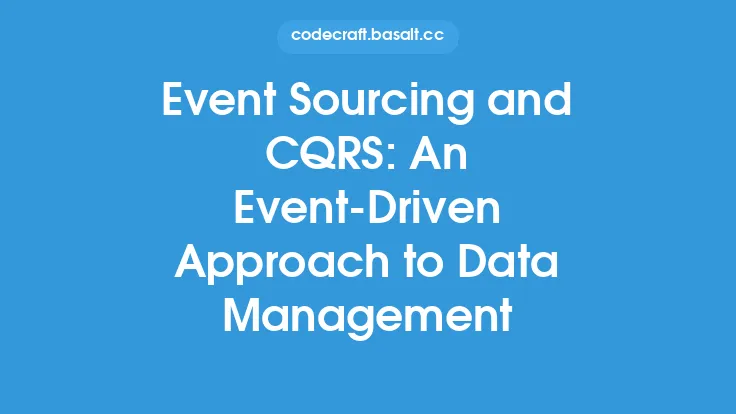Measuring performance in event-driven systems is crucial to ensure they operate efficiently and effectively. These systems, characterized by their ability to handle and respond to events or user interactions, require careful monitoring to maintain their responsiveness and scalability. The performance of an event-driven system can be evaluated using various metrics and monitoring strategies, each providing insights into different aspects of the system's operation.
Key Performance Metrics
Several key performance metrics are essential for evaluating the performance of event-driven systems. These include throughput, latency, error rates, and resource utilization. Throughput measures the number of events processed per unit of time, indicating the system's capacity to handle workload. Latency, on the other hand, measures the time it takes for the system to respond to an event, which is critical for real-time applications. Error rates indicate the frequency of failures or exceptions, which can impact user experience and system reliability. Resource utilization metrics, such as CPU usage, memory consumption, and network bandwidth, help in identifying bottlenecks and optimizing resource allocation.
Monitoring Strategies
Effective monitoring of event-driven systems involves a combination of strategies to collect, analyze, and visualize performance data. Logging is a fundamental approach, where event logs are collected and analyzed to understand system behavior, identify patterns, and detect anomalies. Distributed tracing is another strategy that helps in understanding the flow of events across different components and services, enabling the identification of performance bottlenecks and areas for optimization. Real-time monitoring tools provide instantaneous feedback on system performance, allowing for prompt action in case of issues. Additionally, metrics aggregation tools help in collecting and analyzing performance metrics from various sources, providing a comprehensive view of system performance.
Tooling and Technologies
A variety of tools and technologies are available for measuring performance in event-driven systems. These include open-source solutions like Prometheus and Grafana for metrics collection and visualization, and commercial products like New Relic and Datadog for comprehensive monitoring and analytics. Distributed tracing tools like Zipkin and Jaeger provide detailed insights into event flows and system interactions. Logging tools like ELK Stack (Elasticsearch, Logstash, Kibana) and Splunk help in log collection, analysis, and visualization. The choice of tooling depends on the specific requirements of the system, including scalability, complexity, and the need for real-time insights.
Challenges and Considerations
Measuring performance in event-driven systems comes with its own set of challenges and considerations. One of the primary challenges is dealing with the complexity and scalability of these systems, which can generate vast amounts of performance data. Another challenge is ensuring that monitoring does not introduce significant overhead, affecting the system's performance. Security is also a critical consideration, as performance monitoring may involve accessing sensitive data and system internals. Furthermore, the dynamic nature of event-driven systems, with components and services being added or removed, requires monitoring strategies to be flexible and adaptable.
Best Practices
Several best practices can help in effectively measuring performance in event-driven systems. First, it's essential to define clear performance goals and metrics that align with the system's requirements and user expectations. Implementing a comprehensive monitoring strategy that includes logging, tracing, and metrics collection is crucial. Real-time monitoring and alerting can help in quickly identifying and addressing performance issues. Regular analysis and review of performance data can provide insights into system behavior and areas for optimization. Additionally, automating performance testing and benchmarking can help in ensuring that changes to the system do not negatively impact performance.
Future Directions
The future of measuring performance in event-driven systems is likely to be shaped by advancements in technologies like cloud computing, serverless architectures, and artificial intelligence. Cloud-native monitoring tools and services are becoming increasingly popular, offering scalability, ease of use, and integration with cloud platforms. Serverless computing introduces new challenges for performance monitoring, as the execution environment is ephemeral and resource allocation is dynamic. Artificial intelligence and machine learning can be applied to performance data to predict potential issues, automate optimization, and provide personalized insights. As event-driven systems continue to evolve and play a critical role in modern software applications, the importance of effective performance measurement and monitoring will only continue to grow.





